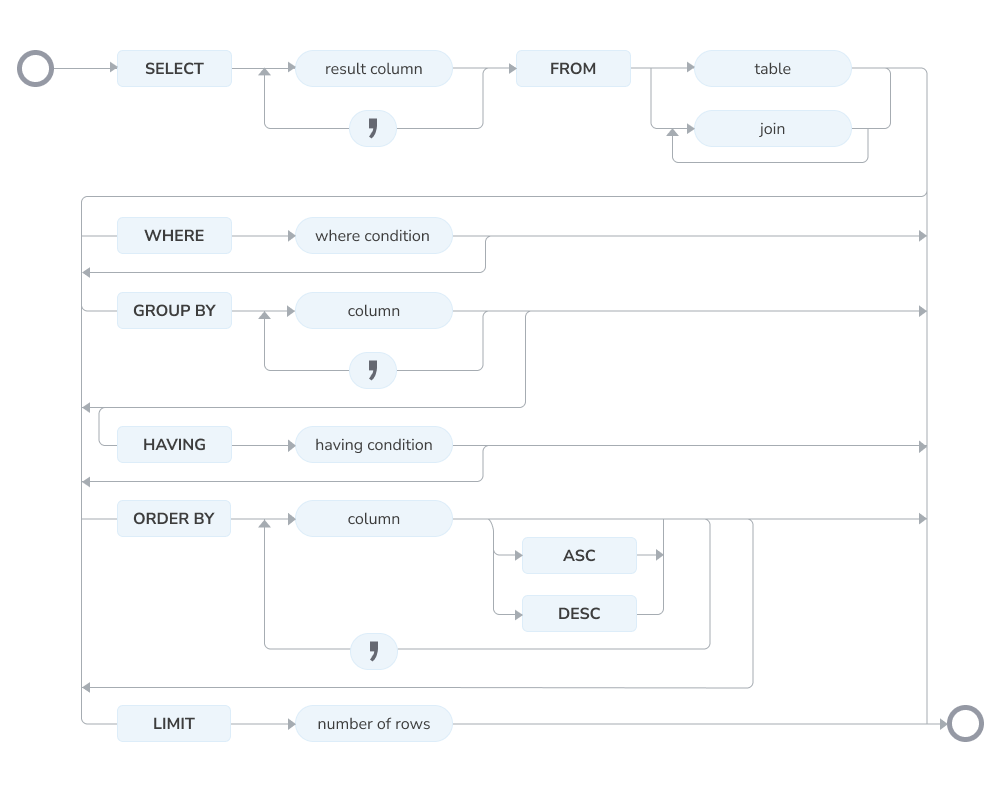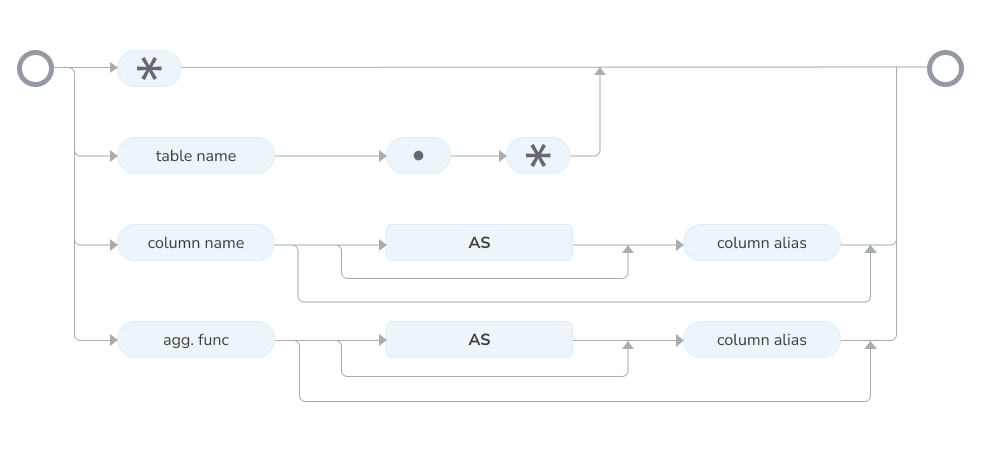SQL translation
The driver translates a subset of SQL-92 SELECT statements into SOQL for remote execution. UPDATE, INSERT, and DELETE statements are mapped to corresponding Salesforce API calls for data modification.
To be translatable, a SELECT statement must meet the requirements described on this page.
Note
Remote execution provides significantly higher performance than local execution. It’s recommended to use
SELECTstatements that are translatable into SOQL. For more information, see Query processing.
Syntax overview
The following diagrams show the SELECT statement syntax that are translated into SOQL and executed remotely.
select:

column:

result-column:

table:

join:

Requirements
To be translatable into SOQL, a SELECT statement must meet the following requirements:
-
SELECT clause: It must include only column names, an asterisk (*), or aggregate functions. SQL functions or expressions are not translatable.
-
FROM clause: It must contain only one table or joined tables. A
JOINis translatable only if all of the following conditions are met:- Joined tables correspond to the Salesforce objects that are linked through object relationships.
- The
JOINis performed on the relationship field (column) and the ID field (column). - Child object (table) is placed first in the
JOIN.
Two types of
JOINcan be translated into SOQL:LEFT JOIN(orLEFT OUTER JOIN) andINNER JOIN.INNER JOINcan be used multiple times to connect more than two tables. However, if you useLEFT JOIN, it must be the onlyJOINin the statement. - The WHERE clause must contain only comparisons of a column and a constant or the LIKE operator. Although SOQL requires the column to be on the left side of comparison expressions, this restriction does not apply when using Devart ODBC Driver for Salesforce. Comparisons are united with the logical operators AND and OR.
- The ORDER BY and GROUP BY clauses are supported, but only sorting and grouping on fields (columns) are available. Expressions are not allowed.